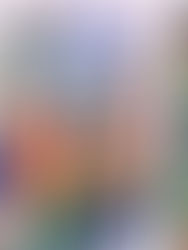How Do You Solve a Problem Like Trauma?
- Peaches James
- Apr 19
- 4 min read
Updated: Apr 21
This isn’t a guidebook—it’s a conversation I’ve been having with myself for years. About pain. About patterns. About trying to do better without always knowing how. I wanted to feel less alone in what I was carrying. If you’ve ever felt misunderstood, unheard or unsure of how to begin healing—this is for you.
Trauma isn’t just something that happens to us—it’s something we carry.
In our words. In our silence. In our reactions, relationships and even the ways we see ourselves.
It doesn’t follow a straight path. It’s inherited, absorbed, misunderstood, misnamed and often, misread by the very people trying to love us.
For a long time, I thought the gap I was struggling with was generational. Me, trying to understand myself. Them, not really seeing me. But the more I sat with it, the more I realized: this gap exists everywhere. Between age groups, yes. But also between friends. Between strangers. Between the person I show the world and the one I don’t fully understand yet.

Why Understanding Trauma Matters
When we don’t understand trauma, we judge it. We minimize, we blame, or we try to fix it without listening.
We say things like “That was ages ago,” “At least it wasn’t worse,” or “You should be over that by now.” And every time we do, we reinforce silence. We widen the gap.
But understanding—even a little—creates the opposite. It makes space. It says, I may not have lived your experience, but I’m willing to sit with it.
That’s where healing begins.
The Trauma Behind the Smile
Let me be honest: I’ve worn masks for most of my life. Smiles in places I should’ve cried. Politeness in rooms where I was hurting. I’ve played the version of me people expected because it felt safer than the truth. And sometimes, even now, I feel like a stranger to myself.
I used to wonder if that meant I was broken. People threw around labels—“split,” “dramatic,” “too sensitive”—but really, I was just surviving. Adapting. Finding ways to exist when being myself didn’t always feel safe.
Understanding trauma means understanding this: not all pain looks like pain. Sometimes it looks like success. Or control. Or perfectionism. Or silence. And sometimes, it looks like someone who has no idea what version of themselves will show up today.

When Love and Hurt Come From the Same Place
The hardest part? Realizing that the people I love the most may have also hurt me the most. Not out of malice. Often, just out of their own pain. Their own unhealed stories. I’ve wrestled with the guilt of even thinking that. Of wanting to name my truth without blaming them.
But healing doesn’t mean tearing anyone down. It means stepping into clarity. Saying, “This happened. It hurt. And I’m learning how to carry it without carrying shame too.”
Trying to Break the Cycle While Still Inside It
For those of us trying to “break the cycle”—with our own kids, our communities or just within ourselves—it’s complicated.
We’re often trying to do better while still dealing with the aftermath of what was done to us.
We want to protect others, even as we’re still learning how to protect ourselves. And that can feel impossible.
Sometimes healing means making hard choices—setting boundaries, starting therapy, asking hard questions.
It can feel like we’re betraying our families or communities by doing so. But the truth is, healing is one of the most loving things we can offer. Because the silence that protected the pain is the same silence that passes it on.
So How Do We Bridge the Gap?
We start by learning how to see each other—and ourselves—with more nuance. Here’s what helps:
Listen to understand, not to respond. Let people tell their story, even if it’s messy. Especially if it’s messy.
Hold space, not judgment. You don’t have to relate to validate.
Respect different coping mechanisms. People survive however they can.
Educate yourself. Learn how trauma shapes behaviour, identity and family dynamics. Unlearning takes effort.
Start where you are. Healing doesn’t require perfection—just willingness.
Bridging Starts With Us
Here’s the hard, honest truth about being part of this generation: we’re not just trying to break the cycle—we’re living in it, shaped by it and sometimes, despite our best intentions, still repeating it.

Many of us are only just beginning to name the trauma we've inherited and in the same breath, we’re realizing the ways we’ve already passed parts of it on. We’re raising children, leading relationships, navigating family, while carrying wounds we didn't ask for—and sometimes, unintentionally inflicting new ones. It’s a painful paradox: being both the wounded and at times, the wounder. Both the one who needs healing and the one who has to offer it.
This dual (or triple) role is exhausting. It asks us to unpack the past while holding space for the future. To face the truths that were buried in silence—even when those truths are uncomfortable or painful to others.
Even when they reshape the story we’ve been telling ourselves about our family or ourselves.
But silence doesn’t erase harm. It only makes it easier for harm to echo quietly through generations.
Healing—real healing—means facing those echoes.
It means being brave enough to say, this hurt me and I hurt others.
It means grieving the family we needed but didn’t have and forgiving the parts of ourselves that did what they could to survive.
It means setting boundaries that others may not understand and being willing to love in a way that includes accountability.
And no, it won’t always feel heroic.
Sometimes it will feel like guilt.
Or shame. Or regret.
But choosing to begin—however clumsily—is not failure.
It’s courage.
It’s love in action.
It’s choosing to meet our pain with truth, not denial. and to meet our children, our partners and ourselves with presence, not perfection.
It’s not betrayal. It’s the beginning of something more honest, more whole.
Bridging the gap between generations isn’t about having all the answers. It’s about learning to ask better questions. It’s about showing up—messy but real. It’s making space for grief and grace, harm and healing, survival and transformation.
And maybe most of all, it’s about giving ourselves—and each other—permission to change the story, even if we’re still learning how to tell it.






Comments